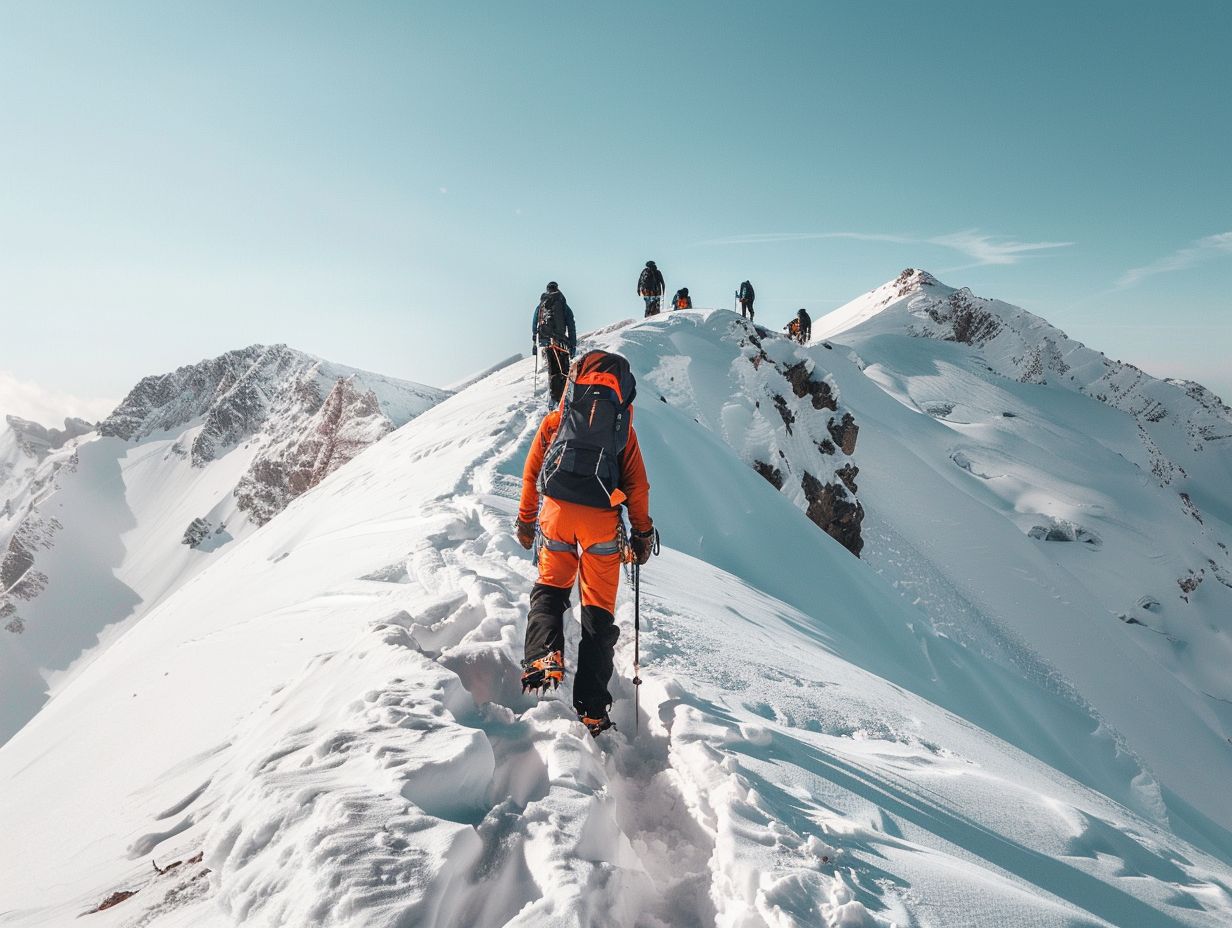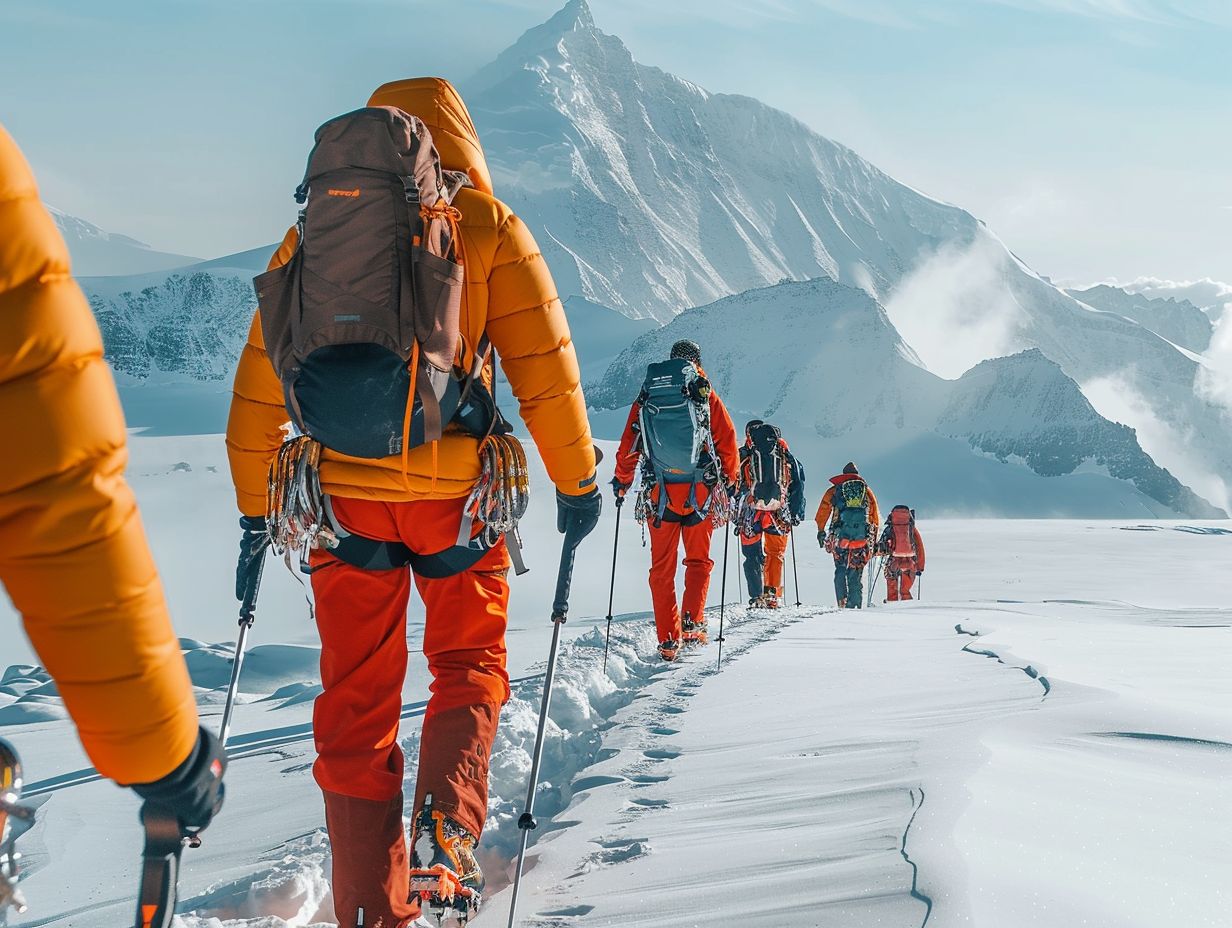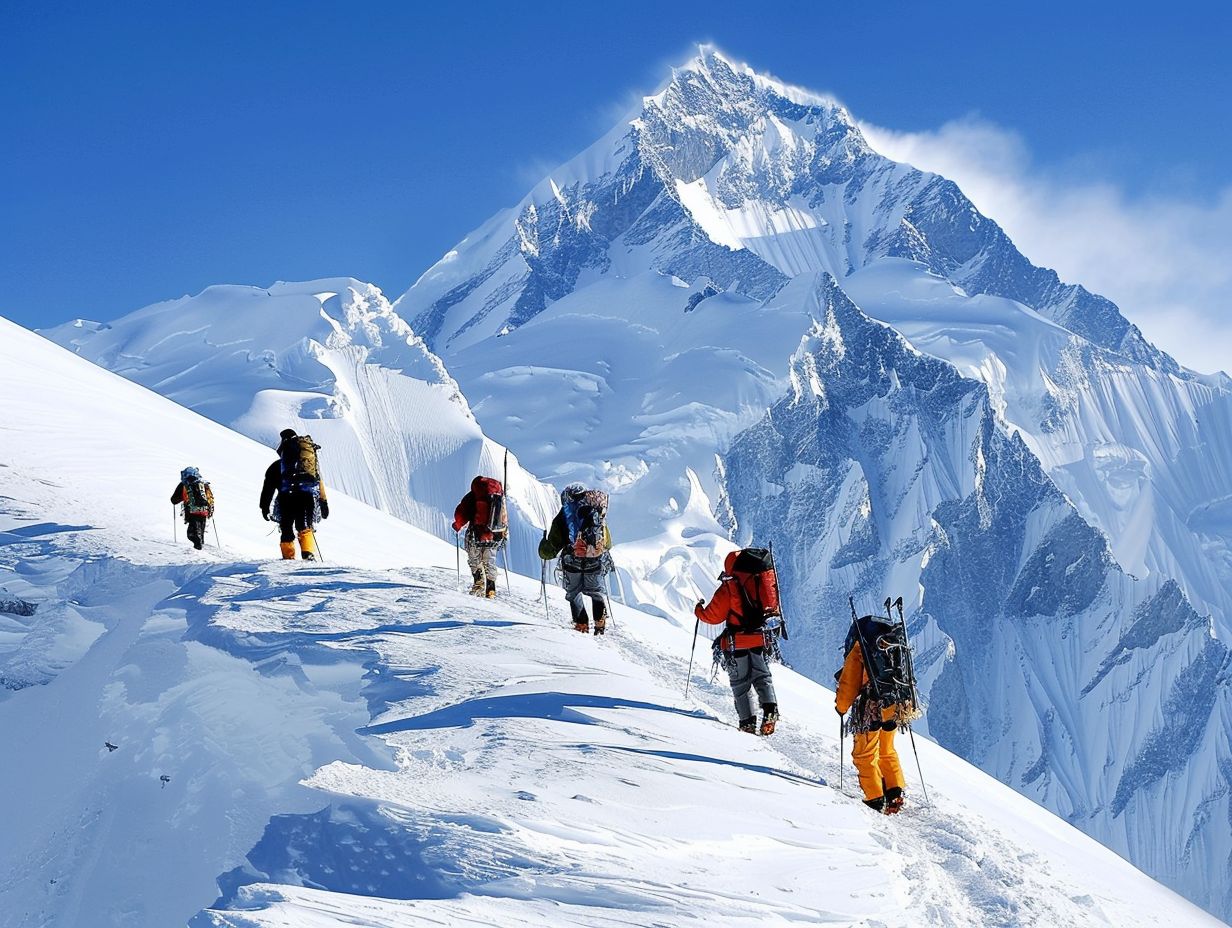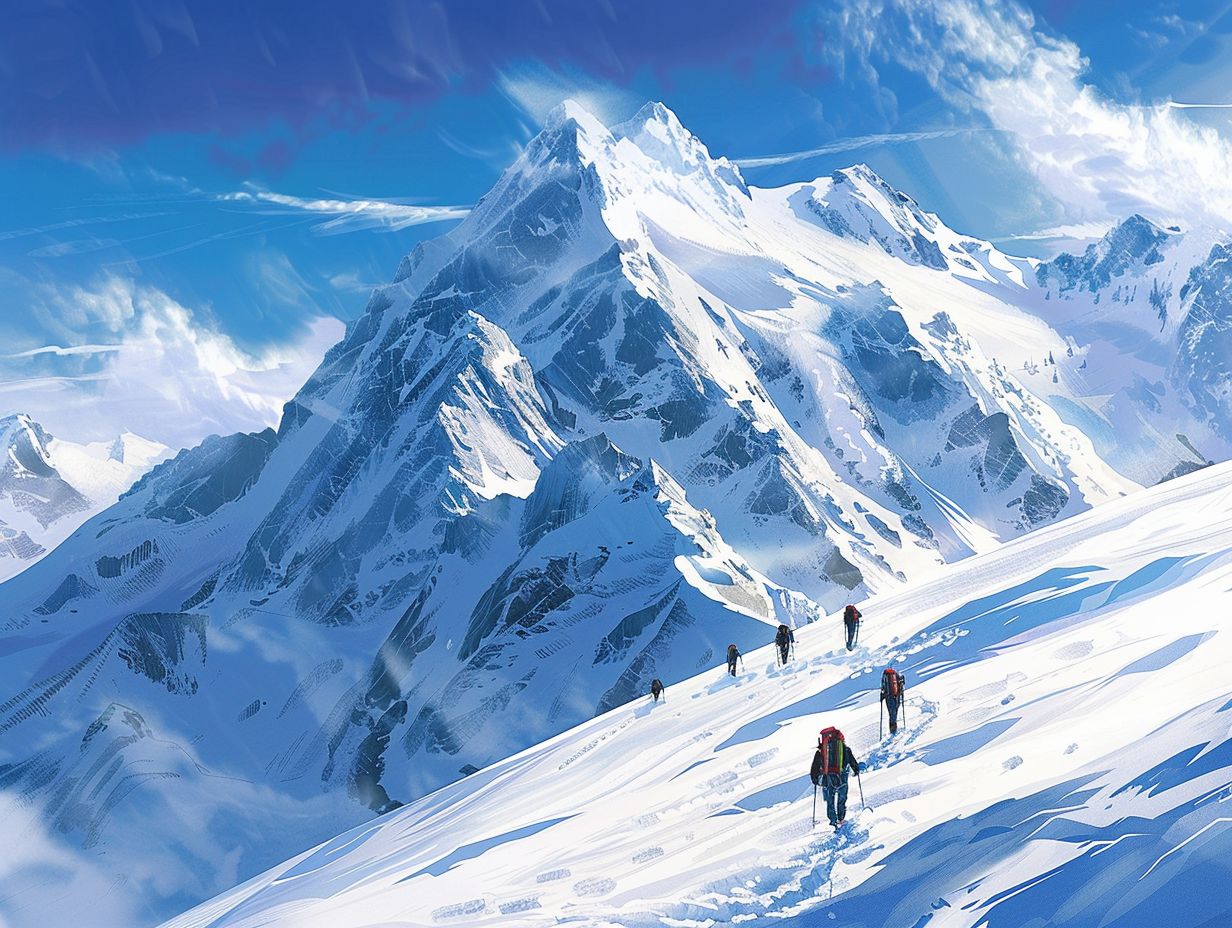
Mount Kilimanjaro, the highest peak in Africa is a majestic mountain that attracts climbers from around the world. But before you embark on this journey, you may be wondering – how long does it take to climb Mount Kilimanjaro?
We will explore the different routes to climb the mountain, the factors that affect the climb time, and the average time it takes to reach the summit.
We will discuss the physical requirements for climbing Kilimanjaro, the best times to climb and the challenges you may face along the way. So, lace up your hiking boots and get ready for an adventure of a lifetime!
Key Takeaways:
- Climbing Mount Kilimanjaro can take anywhere from 5-9 days depending on the route and individual factors.
- Physical fitness and proper training are essential for a successful climb on Mount Kilimanjaro.
- The best time to climb Mount Kilimanjaro is during the dry season, but be prepared for physical, mental, and environmental challenges during the climb.
Mount Kilimanjaro, located in Tanzania, is the highest mountain in Africa and one of the most iconic peaks in the world.
Climbing Kilimanjaro became popular in the late 19th century when European explorers started conquering its challenging slopes. The mountain itself is a dormant volcano with three volcanic cones: Kibo, Mawenzi, and Shira.
At 5,895 meters (19,341 feet) above sea level, the Uhuru Peak on Kibo’s crater rim is the highest point on Kilimanjaro and the ultimate goal for climbers. The diverse ecosystems on the mountain, from lush rainforests to alpine deserts, make the ascent a unique journey filled with breathtaking views and natural wonders.
How Long Does It Take To Climb Mount Kilimanjaro?

The duration to climb Mount Kilimanjaro varies depending on the route chosen, the climber’s fitness level, and the time taken to acclimatize to the altitude. On average, climbers take around 5 to 9 days to complete the trek to the summit.
One of the key factors influencing the duration of the climb is the route selection. Kilimanjaro offers several routes, each varying in length, difficulty, and scenery.
For example, the Marangu route is one of the shorter options, typically completed in around 5 to 6 days, while the longer Lemosho route can extend the trek to 7 to 9 days.
Acclimatization is crucial when attempting to reach the summit of Kilimanjaro. Adequate time spent acclimatizing helps reduce the risk of altitude-related illnesses, such as altitude sickness. This is why many climbers opt for longer treks, allowing for gradual ascent and proper acclimatization.
In fact, the current record for the fastest Kilimanjaro ascent stands at just a little over 6 hours, but such attempts are extremely rare and not recommended due to health risks.
What Are The Different Routes To Climb Mount Kilimanjaro?
There are several routes to climb Mount Kilimanjaro, each offering unique challenges and experiences. The most popular routes include the Marangu, Machame, Lemosho, and Rongai routes, all of which traverse through Kilimanjaro National Park.
- Let’s start with the Marangu route, also known as the ‘Coca-Cola’ route for its facilities. It is considered one of the easier routes, presenting a gradual ascent through lush rainforests.
- The Machame route, on the other hand, is known as the ‘Whiskey’ route for its more challenging terrain, offering stunning views and a diverse landscape that includes alpine deserts.
- The Lemosho route is favored for its scenic beauty and gradual climb, allowing for excellent acclimatization. It approaches Kilimanjaro from the west and offers breathtaking views of the Shira Plateau.
- The Rongai route, coming from the north, is known for its solitude and unique perspectives of the mountain, passing through fascinating alpine meadows.
What Are The Factors That Affect The Climb Time?
The climb time on Mount Kilimanjaro is influenced by various factors such as the chosen route climber’s fitness level, altitude acclimatization, weather conditions, and the overall success rate of the team. These factors play a crucial role in determining the pace and duration of the ascent.
Success rate is particularly significant as efficient teamwork and coordination can contribute to a smoother climb. Optimal fitness level not only enhances endurance but also aids in quicker acclimatization, which is essential to avoid altitude sickness.
Weather conditions like temperature, wind, and precipitation directly impact the climbing speed and safety measures. Routes with higher success rates often translate to better-managed climbs, offering more consistent pacing and increased chances of reaching the summit in a safe and timely manner.
How Does Altitude Affect The Climb Time?
Altitude plays a significant role in determining the climb time on Mount Kilimanjaro.
As climbers ascend higher, the effects of altitude sickness become more pronounced, with symptoms including headache, fatigue, and nausea hindering their progress.
To combat these challenges individuals should allow ample time for acclimatization, which involves gradual exposure to higher altitudes to help the body adjust to lower oxygen levels.
It is crucial to maintain a slow and steady pace during the ascent, as a rapid climb increases the likelihood of experiencing severe altitude sickness and can lead to potential health risks.
What Is The Average Time To Climb Mount Kilimanjaro?

The average time taken to climb Mount Kilimanjaro ranges from 5 to 7 days for most climbers aiming to reach the summit. The duration can vary based on individual fitness levels, acclimatization success, and the chosen route to the peak.
Among the popular routes, the Marangu route, known as the ‘Coca-Cola’ route, typically takes around 5-6 days, making it one of the shorter options.
In contrast, the Lemosho route, offering stunning scenery, usually spans 6-8 days due to its gradual ascent profile.
One crucial factor influencing climbing time is the peak conditions. Weather, temperatures, and even the presence of snow can significantly affect the duration of the climb, especially during the final push to reach Uhuru Peak.
What Are The Physical Requirements For Climbing Mount Kilimanjaro?
Climbing Mount Kilimanjaro demands a good level of physical fitness, prior trekking or hiking experience, and adequate training to handle the altitude and technical climbing challenges. Proper equipment and preparation are crucial for a successful ascent.
When undertaking the journey to the peak of Kilimanjaro, climbers must be prepared for a demanding physical endeavor. The ascent involves long challenging treks through various landscapes, including steep inclines and high altitudes that can test one’s endurance and strength.
It is important to have a well-rounded fitness level that includes strength, endurance, and cardiovascular training.
Prior trekking or hiking experience is essential to understand the rigors of long-distance walks and the mental resilience required to overcome physical obstacles. Climbers often spend months preparing through regular hiking trips, cardio exercises, and strength training to ensure they are physically ready for the climb.
Proper equipment is a non-negotiable aspect of such a demanding expedition. From sturdy hiking boots to insulated clothing, and high-altitude gear, every piece of equipment must be carefully chosen to withstand the challenging terrain and harsh conditions. Without the right gear, climbers are at risk of discomfort, injury and potential failure to reach the summit.
How Fit Do You Need To Be?
To undertake the climb up Mount Kilimanjaro, climbers need to be in good physical condition, able to handle long days of trekking, steep ascents, and high altitude environments. The level of fitness required is essential for a safe and enjoyable expedition.
Specifically tailored training regimes targeting cardiovascular fitness, leg strength and endurance are crucial in preparing for the rigorous demands of climbing Kilimanjaro. Climbers should focus on activities like hiking, cycling, and running to build stamina and muscle strength.
It is important to gradually increase training intensity and duration to acclimatize the body to mountain conditions. Practicing hikes at high altitudes can help simulate the reduced oxygen levels experienced during the climb.
A well-rounded fitness routine that combines aerobic exercise, strength training, and flexibility exercises will enhance overall fitness level and reduce the risk of injuries during the challenging climb.
How Can You Train For Climbing Mount Kilimanjaro?
Training for climbing Mount Kilimanjaro involves a structured program that focuses on cardiovascular fitness, strength training, endurance building, and altitude simulation. Athletes often follow rigorous workout regimes to prepare for the physical demands of the ascent.
Creating a comprehensive training guide tailored for Kilimanjaro climbers is essential to ensure that individuals are adequately prepared for the challenges of the climb.
A well-rounded training program should include a combination of aerobic exercises like running and cycling to improve cardiovascular endurance, resistance training to build strength in key muscle groups such as legs, core, and back, and hikes or stair climbing to simulate the uphill trek on the mountain.
Regular altitude simulation exercises, either through high-altitude training or using altitude masks, are crucial to acclimatize the body to the reduced oxygen levels at higher elevations.
What Are The Best Times To Climb Mount Kilimanjaro?
Choosing the best time to climb Mount Kilimanjaro is crucial for a successful expedition. The ideal climbing seasons are during the dry months when weather conditions are favorable, offering clear skies and lower precipitation levels.
During the dry season months of January to March and June to October climbers can experience clearer visibility, which not only enhances the overall climbing experience but also increases the chances of summiting successfully.
These periods are characterized by stable weather patterns, making it safer and more enjoyable to tackle the challenging terrain of Kilimanjaro.
Choosing the right time to climb Kilimanjaro can also impact the choice of routes. The Marangu and Rongai routes are often recommended during the dry seasons due to their lower risk of mudslides and enhanced scenic views.
On the other hand, the Umbwe route may be more challenging during the wetter months, requiring higher levels of skill and preparation.
What Are The Peak Seasons For Climbing Mount Kilimanjaro?
The peak climbing seasons for Mount Kilimanjaro are typically from January to February and from August to September when the weather is most stable, attracting a higher number of climbers seeking optimal conditions and clearer summit views.
During these times, the advantages of climbing Kilimanjaro are numerous. Clear skies offer breathtaking vistas, and the well-defined paths make the journey more manageable. Optimal temperatures reduce the risk of frostbite, ensuring a safer ascent for people of varying experience levels.
Travelers during these peak times can connect with a larger community of climbers sharing in the same exhilarating experience, fostering a sense of camaraderie and shared achievement.
What Are The Off-Peak Seasons For Climbing Mount Kilimanjaro?

The off-peak seasons for climbing Mount Kilimanjaro often align with the rainy periods in Tanzania, resulting in fewer climbers on the mountain. These seasons, such as April to May and November, offer quieter trails and a more serene climbing experience.
During these off-peak times, trekkers can enjoy the beauty of Kilimanjaro without the usual bustling crowds, allowing for a more intimate connection with nature and the surroundings.
The decreased foot traffic also means a lesser impact on the trails and facilities along the route, promoting sustainable trekking practices. The lower demand for permits during the off-peak season can provide climbers with more flexibility in choosing their routes and campsites.
What Are The Challenges Of Climbing Mount Kilimanjaro?
Climbing Mount Kilimanjaro presents a unique set of challenges, encompassing physical obstacles, mental barriers, and environmental factors that can test climbers’ endurance and determination. Overcoming these challenges is crucial for a successful ascent.
One of the most significant challenges climbers face on Kilimanjaro is the rapid changes in altitude. This can lead to altitude sickness, characterized by symptoms such as headaches, nausea, and dizziness. Managing these risks requires careful acclimatization and awareness of one’s body’s adaptation to the thinning air.
Technical climbing aspects such as rocky terrain, unpredictable weather conditions, and negotiating glaciers further add to the complexity of the ascent. Navigating through these obstacles demands skill, concentration, and proper equipment to ensure safety and success.
What Are The Physical Challenges?
The physical challenges of climbing Mount Kilimanjaro include long days of trekking, high altitude fatigue, steep ascents, and technical climbing sections that demand endurance, strength, and foot care. Fitness and proper gear are essential for overcoming these obstacles.
At high altitudes, the decreased oxygen levels can impact physical performance, leading to symptoms like headaches, fatigue, and shortness of breath. This in turn can slow down the pace of the climb and increase the risk of altitude sickness. It’s crucial to acclimatize properly by taking regular breaks, staying hydrated, and listening to your body.
Foot care is vital on the mountain as blisters and soreness can significantly hamper progress. Wearing moisture-wicking socks, properly fitted boots, and using techniques like double-layered socks or moleskin can prevent common foot issues.
Keeping toenails trimmed and carrying spare socks can also aid in maintaining foot health during the climb.
What Are The Mental Challenges?
The mental challenges of climbing Mount Kilimanjaro revolve around maintaining motivation, dealing with altitude-induced stress, and overcoming doubts during the ascent. Summiting the peak requires mental resilience, positive thinking, and drawing upon past climbing experiences.
Many climbers face psychological hurdles when attempting to conquer Kilimanjaro, with fears of failure and physical exhaustion plaguing their minds. The intense altitude sickness can lead to severe headaches, nausea, and fatigue, making it crucial for climbers to stay mentally strong.
- Strategies to combat these mental challenges include practicing mindfulness, focusing on small milestones, and creating a strong support system with fellow climbers.
- Visualizing the summit, staying hydrated and listening to motivational music can also boost morale and help climbers push through moments of doubt.
What Are The Environmental Challenges?

Environmental challenges on Mount Kilimanjaro include unpredictable weather patterns, extreme temperatures, and potential hazards like rockfalls or avalanches. Safety precautions, weather monitoring, and proper gear are vital for navigating these environmental obstacles.
It is essential for climbers to be aware of the risks associated with these challenges to ensure a safe and successful ascent. Climbers should always be prepared for sudden changes in weather, such as heavy snowfall or high winds, which can significantly impact their journey.
Proper acclimatization is critical to avoid altitude sickness, a prevalent issue on high-altitude expeditions like Kilimanjaro.
When undertaking such a venture climbers must equip themselves with appropriate clothing, including layers for insulation and protection against the harsh conditions. It is also advisable to have sturdy hiking boots to navigate the diverse terrain and potential obstacles on the mountain.
Frequently Asked Questions
How Long Does It Take To Climb Mount Kilimanjaro?
The time it takes to climb Mount Kilimanjaro depends on which route you take, but on average it takes anywhere from 5-9 days.
What is the fastest route to climb Mount Kilimanjaro?
The fastest route is the Marangu route, which takes 5-6 days to complete. However, this route is also the shortest and less scenic.
Which is the most popular route to climb Mount Kilimanjaro?
The most popular route is the Machame route, which takes approximately 7 days to complete. This route offers stunning views and a higher success rate of reaching the summit.
Can I climb Mount Kilimanjaro without a guide?
No, it is mandatory to have a guide when climbing Mount Kilimanjaro. This is for your safety and to adhere to conservation regulations.
What is the success rate of climbing Mount Kilimanjaro?
The success rate varies depending on the route, but on average it is around 65%. Factors such as physical fitness, altitude sickness, and weather conditions can affect the success rate.
How can I prepare for climbing Mount Kilimanjaro?
It is recommended to train for at least 6-8 weeks prior to climbing, focusing on cardiovascular and strength exercises. Also, make sure to acclimate to the altitude by doing a few practice hikes at higher elevations.